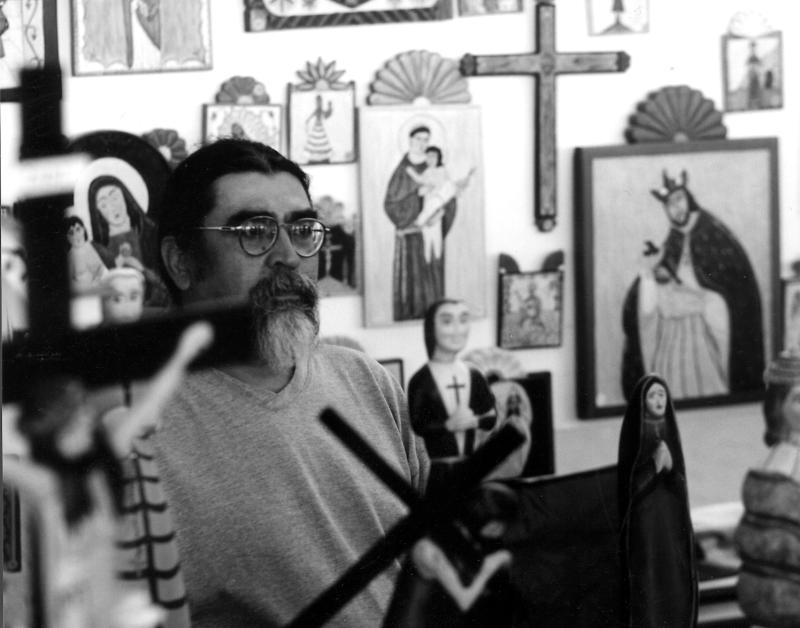1996

Artist Carlos Rael created a website to market his works, carvings of religious icons known as santos, after receiving computer and Internet training as part of the NEA-sponsored Open Studio program. Photo provided by Carlos Rael
New Mexican artist Carlos Rael is a santero, a carver of religious icons known as santos. Santo carving is an art form that originated centuries ago in Europe and continues to evolve in the Americas. While his artistic style is traditional, his marketing methods are cutting edge.
Rael is one of a large number of artists in Taos, New Mexico, who learned to use technology through Open Studio, a program jointly created and funded by the National Endowment for the Arts and the Benton Foundation that launched in 1996. Expanding the reach and potential of the internet, Open Studio trained artists to use new technology not only as a medium for displaying their work, but also as a resource for artistic research and for facilitating communication between artists and art consumers across the country. An example of a successful public-private partnership, the Arts Endowment's total investment of $1.5 million was nearly tripled with funds from other sources, further expanding the program's reach.
Open Studio funds enabled La Plaza, the New Mexican nonprofit organization serving as the Taos training site, to purchase state-of-the-art computer facilities and bring in specialists to train local artists such as Rael.
While the Taos site helped Rael and other New Mexican artists find markets for their works, more than 70 additional sites nationwide encouraged artists and organizations to become participants in the digital arena in a variety of other ways. For example, the Seattle Art Museum developed a curriculum specifically to teach artists how to look at the web as a new medium. In East St. Louis, Illinois, the Katherine Dunham Center for the Arts and Humanities put its collection online, creating a virtual museum. Space One Eleven in Birmingham, Alabama, formed a partnership allowing it to offer commercial web server space and technical assistance that would not otherwise be available to artists.
Rael said that going online transformed his career. "The flexibility computers bring to my work is unbelievable. I think we are about to see a real transition in the art world in which virtual galleries will be the wave of the future, since they will allow artists such as myself to rotate art exhibits more easily and to reach a larger audience. Also, virtual galleries cut out the large commissions that galleries charge.”
Rael’s vision of the future proved prescient: now virtual galleries are prevalent throughout the internet, and artists can reach much larger audiences through web interaction than ever before.

